Carrier pigeons, also called homing pigeons, are those trained to carry messages (up to 50 grams in weight) from place to place.
Experts say that pigeons have been tamed for about 5,000 years and were once used to transport important communications between locations.
As an Amazon Associate we may earn a small commission on purchases made through any Amazon links, this helps support us, thankyou.
About to buy your first pigeon?
Click to view essential products to help you take the best care of them:
In fact, pigeons are credited with having saved thousands of lives during WWI when they were used to take messages back and forth across enemy lines.
Carrier pigeons can find their way back to their nest from more than 1,000 miles away, which made them an ideal choice for this reason.
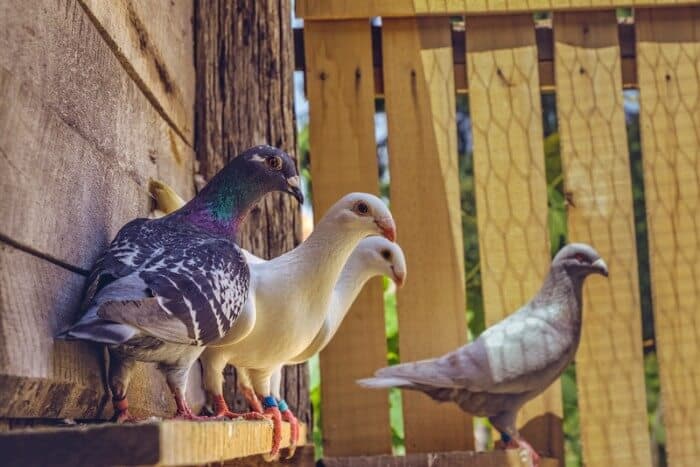
Today, in the age of cell phones and email, the need for carrier pigeons isn’t what it once was.
However, people today are still interested in training homing pigeons, both for entertainment purposes and also for racing.
If you keep pet pigeons and would like to try your hand at training your bird to be a carrier pigeon, you’ll find everything you need to know in this guide.
When to Start Training Your Carrier Pigeon
One of the most important things you can do when you decide to train homing pigeons is to get started at the right time.
Start too soon and your pigeon may not be ready to be trained yet and wait too long and you may have passed the ideal time frame in which to instill the skills necessary to be a successful homing pigeon.
Experts agree that the sweet spot for getting started is at about the six-week mark, which is generally when you can expect them to remember where the exit and entrance to their coop or nest is.
What You Will Need
Keeping a pigeon as a pet is an entirely different scenario than working to train carrier pigeons. For that reason, you’ll need to be sure you have the proper materials to do the job correctly.
Some of these items may be something you have for your pet, while others may be additional items you’ll need to buy.
You’ll need to have a place for the pigeons to live, such as a loft or dovecote.
You can buy a loft or you can build one yourself.
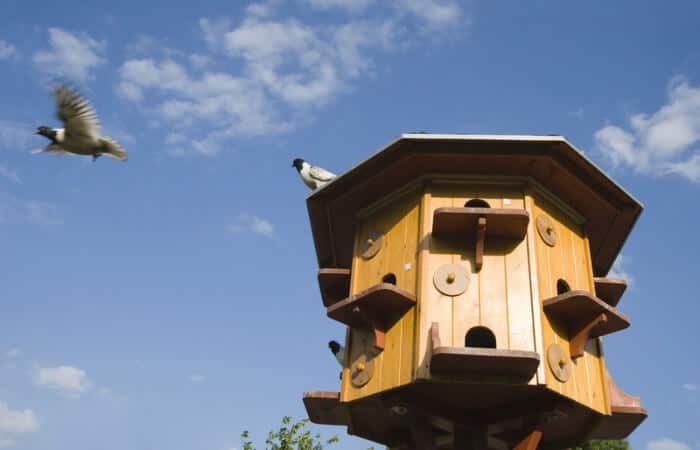
Whichever option you choose, the loft should have a trap door that you’ll use to release your pigeons. You should plan to offer a 10 cubic foot area for each pair of homing pigeons.
Your loft or coop should also be in a location that’s safe from predators and away from wires or trees that might get in the way of the pigeons leaving or entering the loft.
If you’re also going to be breeding your pigeons, the home will need a separate area for building a nest and incubating eggs.
Start with a small space, then you can expand and add on as you get more pigeons or as you determine that their needs have changed from the original structure.
Obviously, you’ll also need food for your pigeons and nesting materials. Pigeons need a mixture of seeds, grains, protein, fruits and vegetables. You can buy pre-mixed bags of feed or pigeon pellets, but you can also prepare your own pigeon food.
Your pigeons will also need to have a water source that they can access easily. You might also want to offer some grit because it may aid in digestion for your pigeons (although there is some debate about whether or not pigeons need grit).
Some experts suggest offering food a couple of times each day for a set amount of time instead of making it available at all hours of the day and night.
Buying Pigeons
Unless you already have pigeons at the right age to train as carrier pigeons, you’ll need to buy them. The most important thing to consider with this is that you buy from a reputable pigeon dealer so that you can be sure you’re getting birds that are healthy and have been well cared for.
Prices range from about $50 each to several hundred dollars each. You’ll know you have a reputable dealer when the pigeons come with their legs already banded. If not, you will need to band them yourself because this is how you will identify them.
Steps To Train Your Carrier Pigeon
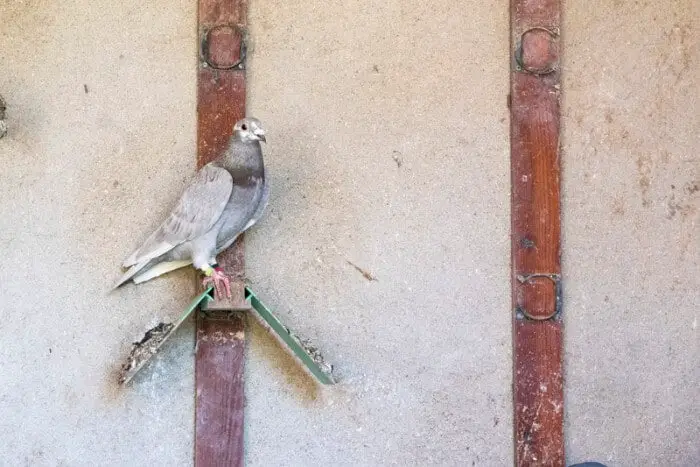
Training a carrier (or homing) pigeon to return home isn’t difficult, it just requires time, practice and consistency.
Follow these steps:
1. Using The Trapdoor
This first skill you will need to teach your homing pigeons is how to use the trapdoor on their loft. This is how they will get into and out of their home and you won’t be able to move on to the other skills if your pigeon can’t do this on its own.
Allow your pigeon to leave its loft so it can become familiar with its nearby surroundings. Once your pigeon has mastered this skill, you can move on to the next one.
2. Leaving the Loft
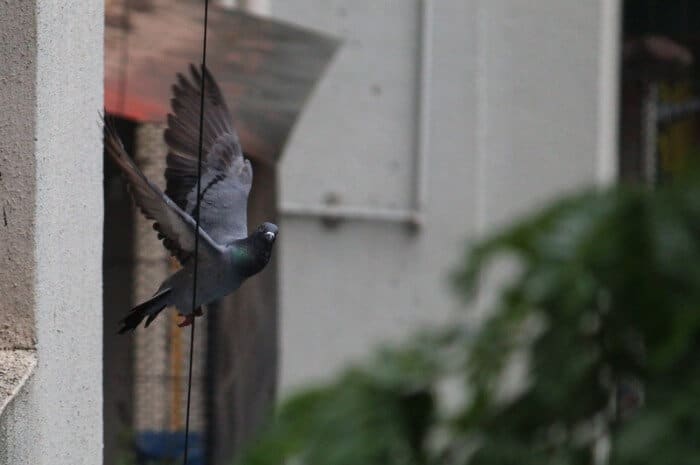
Now you’re going to teach your pigeon to find its way home.
A lot of this is instinct, but you should be close by and monitor the progress.
To do this, place your pigeon in a small crate or nest that it can’t get out of and move about a mile from its loft.
Release the pigeon so that it can fly back home. Start with this small distance so that you don’t get so far that your pigeon gets lost as it learns the skills.
Repeat this process several times each week to help your pigeon get familiar with it and help it remember how to return home so that you can move on further distances.
3. Increasing Distance
Once your pigeon has mastered getting home from one mile away, gradually add additional distance with each trip out.
Try to add five miles each week, going a little further each time you leave the loft.
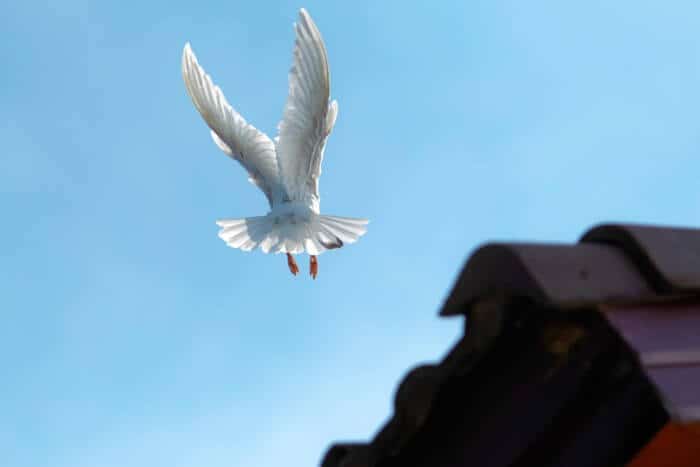
As you increase the distance, go to different locations and in different directions each time you go out so that your bird isn’t just flying the same way every single day.
This way it will become more adept at finding its way home from farther distances and from places it’s never been before.
4. Getting Your Pigeon to Fly Home
You’re probably wondering how to get your pigeon to find its way home.
You may be scared or worried that it will fly away from you and then get lost and be unable to find its way back to the loft.
Fortunately, pigeons are designed to be homing birds so a certain amount of its ability to get home is instinct.
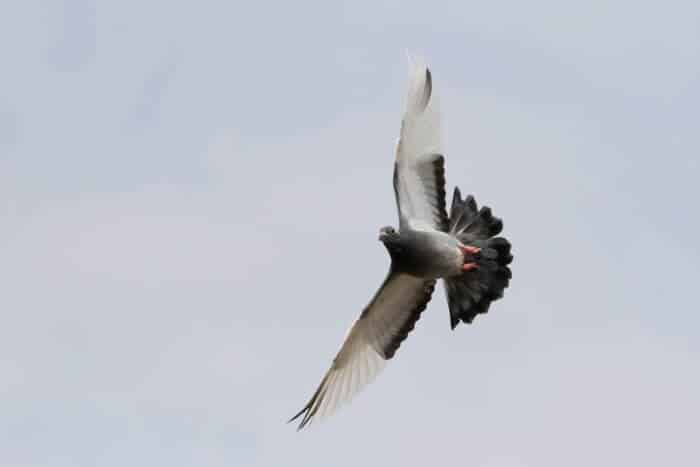
However, there are some ways you can entice your pigeon to want to return to the loft. Make sure there’s a good supply of good quality food and fresh water for the pigeon upon its return.
Coming back to the loft is much more attractive than having to hunt for its own food and water so you can ensure that your pigeon wants to fly home by providing it with readily available meals and drinks.
You also want to provide a cozy place to rest and the right amount of positive interaction.
This will make coming home something the pigeon wants to do and you won’t have to spend a lot of time and effort trying to bait it back to the loft.
Considerations to Keep in Mind
One important thing to keep in mind is that as you gradually increase the distance you take your pigeon, the longer it will take for it to fly home.
You won’t want to stand around and wait as it can take more than a day for your pigeon to find its way back to the loft.
It can be hard to allow this to happen, but it’s the way the process works so give it time and trust that the training you’ve given your homing pigeon will get it back home.
Tips and Tricks for Success
One of the best things you can do for yourself and your pigeons during the training process is to set up a daily schedule.
Training takes time and effort so create a timeline you can stick with that gives you the chance to take your pigeon out often and give it the time it needs to get back home.
Another important aspect of training is to keep your pigeons banded. This allows you to identify your birds and is vital if one of them does get lost.
There are pigeon clubs that allow you to report a lost pigeon and if it’s found by another trainer, you can get it back home where it belongs.
Failing to band your pigeons could mean losing one since the person who finds it won’t know where it belongs. Banding is a responsibility you have as a pigeon trainer and one that you’ll be glad you take the time to do.
As you can see, training homing pigeons can be an enjoyable process and is a hobby that’s unique and interesting. If you love birds, it’s likely something you’re going to love doing.
Pigeons make wonderful pets and are fairly easy to train and you’ll find that you build a bond with your birds that makes them want to perform well for you. Enjoy every minute of it!
How Do Pigeons Know Where To Deliver Messages?
So if you were wondering how on earth pigeons know where to take their messages to it should be clear by now!
Pigeons are trained to fly back to their home, so if you attach a note to them they will return it home, where they came from.
You can’t send a pigeon to numerous different addresses, this won’t work. It will only ever fly back to its home once it has been trained to do so.
